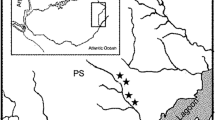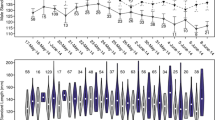Abstract
In the sex-role reversed pipefish Syngnathus typhle females compete for access to males and males are choosy. Females develop a temporary ornament when competing over mates with other females and when performing nuptial dances with males. This ornament is an amplification of the normal striped pattern in these fishes. We here show experimentally that (1) the contrast of this normal pattern forecasts the extent to which the ornament is shown, (2) contrast and ornamentation honestly signal female quality (egg numbers), (3) contrast and ornamentation accurately predict female mating success, (4) contrast is a phenotypically plastic trait specifically exaggerated under situations of female – female competition, and (5) neither contrast nor ornament are energetically expensive to the females (i.e., they are independent of short-term nutritional status). Hence, as predicted in sex-role reversed species, ornament design is constrained by costs to female fecundity: an energetically demanding ornament would impair on a female's ability to produce eggs. The type of ornament described here is the expected one, costly for reasons other than being energetically expensive to produce.
Similar content being viewed by others
Author information
Authors and Affiliations
Additional information
Received: 4 April 1996 / Accepted after revision: 27 October 1996
Rights and permissions
About this article
Cite this article
Berglund, A., Rosenqvist, G. & Bernet, P. Ornamentation predicts reproductive success in female pipefish. Behav Ecol Sociobiol 40, 145–150 (1997). https://doi.org/10.1007/s002650050327
Issue Date:
DOI: https://doi.org/10.1007/s002650050327




